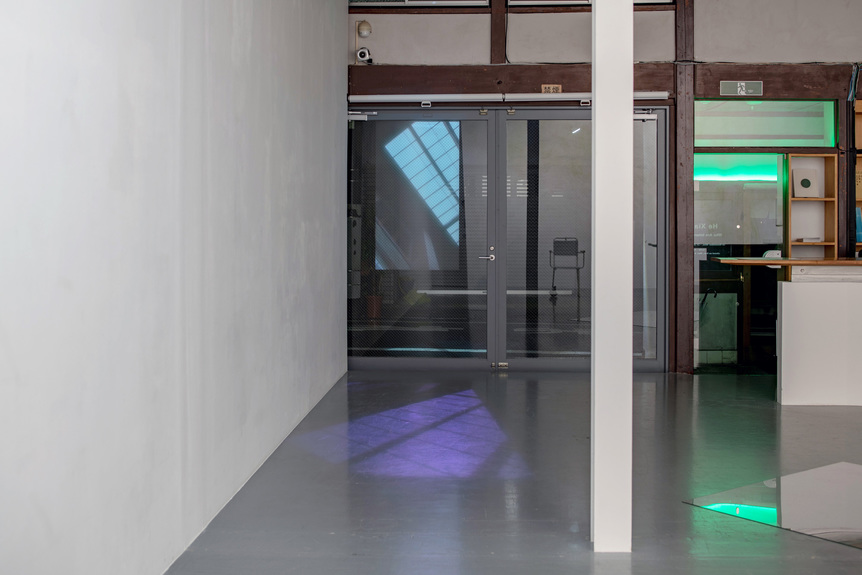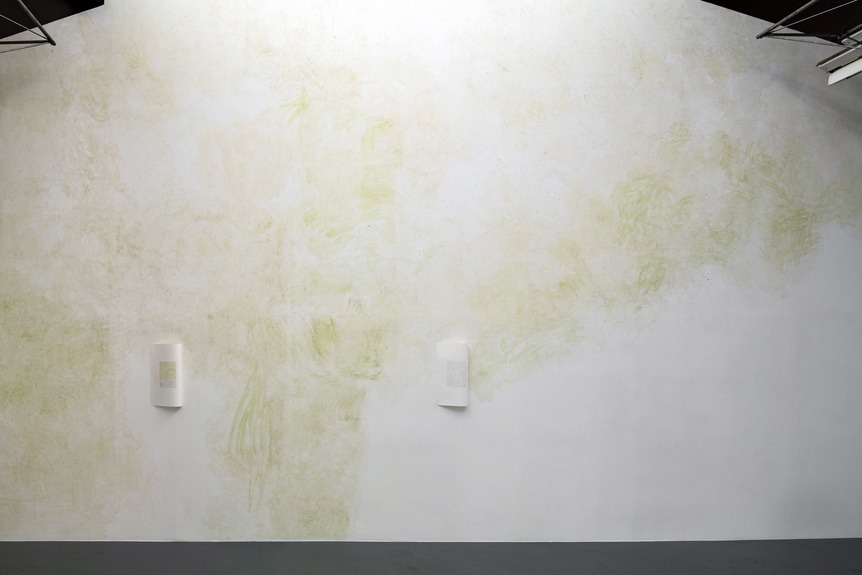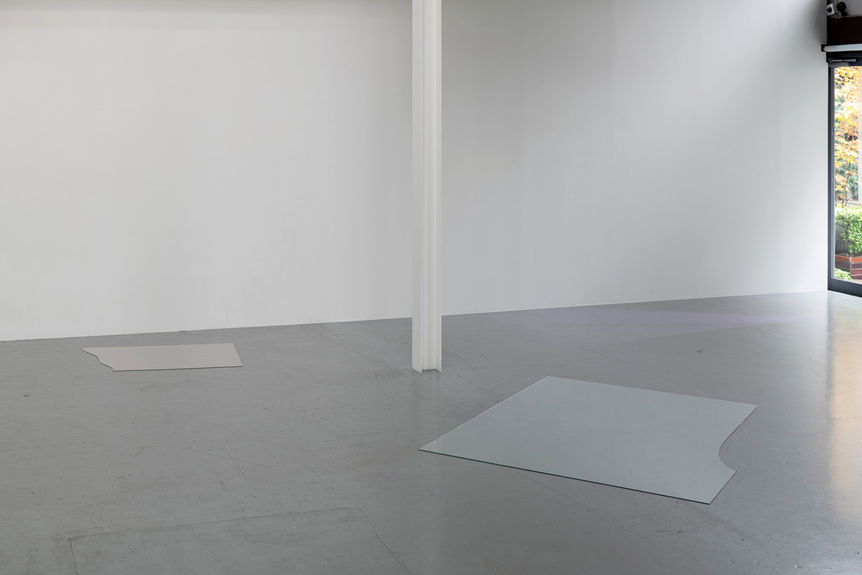-
From Current Issue
-
- Editor’s Letter Fire in the Heart
- Reviews I Gusti Ayu Kadek Murniasih
- Reviews 11th Seoul Mediacity Biennale: “One Escape at a Time”
- Dispatch Networked China
- One on One Monira Al Qadiri on Yukio Mishima
- Essays The rise of independent art spaces in pandemic-era Shanghai
- Features Tuan Andrew Nguyen
- Table of Contents
- Web Exclusives
- Archive
- Subscribe

R
E
V N
E
X
T
Installation view of HE XIANGYU’s "Who Are Interested in Us?” at SCAI the Bathhouse, Tokyo, 2019. All photos courtesy the artist and SCAI the Bathhouse.
The 200-year-old structure that houses Tokyo’s SCAI the Bathhouse gallery was an apt venue for conceptualist He Xiangyu’s concise solo presentation of recent works. This contrast between traditional and contemporary set the stage for He’s “Who Are Interested in Us?,” which explored notions of dissonance manifested in constructed dichotomies.
The windows imbedded in the roof of SCAI allowed light to pour in and cascade onto the works below. In one corner of the room was Secret Pattern (2019), a projected image of a glowing window, shifting in and out of focus as drops of water fall abruptly onto the lens. This perpetual dripping echoed throughout the gallery, immediately connecting He’s work to the historical purpose of the space. This subconscious implication dissolved the distinction between the imagined and the concrete; the sound was foreign but felt local, drawing attention to its symbolic adherence to the space.
SCAI’s large back wall was taken up by the mural Broccoli (2019), for which He used the vegetable to apply a sheer wash of green to the wall’s surface. The mural resembled mildew, providing an earthiness to the gallery space. Mounted symmetrically onto the same wall were two pieces of white paper, each with a small rectangle of green and gray, again applied on location with a head of broccoli, creating an imprint of the wall’s textured surface. Each sheet’s right edge was folded behind itself, causing an interruption in the two-dimensionality and surface pattern of the area. A symbiosis of the organic and the manmade, this work sparks reflection on the distinction between human intervention and natural processes.
Tucked away in the back corner of SCAI, RRR LLL (2019) was a reconfiguration of He’s R & L (2014), in which one sock is set upon a shelf while the other rests on the ground beside it. The newer work consisted of three differently colored pairs of socks, with the right-footed socks suspended vertically by a thin string and the matching left-footed ones ordered in a horizontal line beneath. The absurdly elaborate arrangement, which nullifies the socks’ paired functionality, critiques the unnecessary division of entities that would achieve a higher purpose through unification.
As visitors meandered through the gallery, they were obstructed by Evanescent Desires (2019), two panes of cut glass placed on the gallery floor. The disruption between space and object was immediately identifiable at the edges of the transparent panes, evoking the notion of fixed borders. During the installation of the work, He traced a line in ink around each sheet and then slightly shifted the positions of the glass. The hard-cut edge was thus destabilized by this two-dimensional marking, interrogating the essential arbitrariness of boundaries, and their existence as abstract symbols of division between inside and outside.
He’s approach is characterized by this materializing of psychological boundaries as disruptions in space, but some works offer subtle cues that help viewers to reconcile distinctions between form, texture, color, and concept. Who Are Interested in Us (2019), a white three-legged chair, is unfinished in a concrete sense, emphasizing the opposition between complete and incomplete. A metal cast of a head of broccoli was on the floor where the chair’s missing leg should extend to, generating an abstracted notion of material completeness. He’s placement of the broccoli blurs the distinction between complete and incomplete, illustrating how easily the divide is dissected through this imagined reconstruction.
Notably, each work leveraged the contradictory setting of SCAI the Bathhouse itself to great effect. The referential aspects, such as the appearance of “mildew” on the wall and the sonic presence of dripping water, facilitated a symbiosis between the contemporary artworks and the venue’s historical background, degrading the divide between past and present and bringing the viewer into a state of fantastical associations.
Michael Rasnic is an editorial intern of ArtAsiaPacific.
He Xiangyu’s “Who Are Interested in Us?” is on view at SCAI the Bathhouse, Tokyo, until December 21, 2019.
To read more of ArtAsiaPacific’s articles, visit our Digital Library.












